
Unter den Linden: Berlin's Grand Boulevard
Experience Berlin's vibrant history and culture on Unter den Linden, a grand boulevard connecting iconic landmarks and offering a captivating blend of old and new.
Unter den Linden, meaning 'Under the Linden Trees,' is Berlin's oldest and most famous boulevard, stretching 1.5 kilometers from the Brandenburg Gate to the Schlossbrücke (Palace Bridge) near Museum Island. Originally a bridle path in the 16th century, it was transformed into a grand avenue lined with linden trees in the 17th century. Over the centuries, it has been the heart of Berlin, witnessing Prussian expansion, German unification, division during the Cold War, and reunification. Today, it is a vibrant mix of historical landmarks, cultural institutions, shops, cafes, and restaurants, making it a must-see for any visitor to Berlin. Stroll along the boulevard to experience the city's rich history and vibrant present, passing iconic landmarks such as the Brandenburg Gate, Hotel Adlon, Humboldt University, the State Opera, and the German Historical Museum. The boulevard is easily accessible by public transport and offers a delightful experience for pedestrians.
A brief summary to Unter den Linden
- Berlin, Mitte, 10117, DE
Local tips
- Walk the entire length of Unter den Linden, from Brandenburg Gate to Museum Island, to fully appreciate its historical and architectural significance.
- Visit the German Historical Museum in the Zeughaus to gain a deeper understanding of German history and culture.
- Take a break at one of the many cafes along the boulevard to soak up the atmosphere and people-watch.
- Check for events and performances at the Staatsoper Unter den Linden for a memorable cultural experience.
- Explore the side streets branching off Unter den Linden to discover hidden gems and local shops.
Getting There
-
Public Transport
Unter den Linden is easily accessible via Berlin's extensive public transport network. Several U-Bahn (subway) and S-Bahn (suburban train) stations are located along or near the boulevard, including Brandenburger Tor (U55, S1, S2, S25, S26), Friedrichstrasse (U6, S1, S2, S3, S5, S7, S9, S25, S26), and Unter den Linden (U5, U6). Numerous bus lines also serve the area, such as lines 100, 147, 245, 300, N5, and N6. A short trip ticket (Kurzstrecke) is usually sufficient for traveling within the immediate vicinity of Unter den Linden, costing around €2.00 - €2.30.
-
Walking
Walking is an excellent way to explore Unter den Linden, as it allows you to fully appreciate the architecture and atmosphere. If you are arriving from Brandenburg Gate, simply head east along the boulevard. From Museum Island, head west. The boulevard is pedestrian-friendly, with wide sidewalks and designated crosswalks. Be aware of cyclists, as they also use the boulevard. Walking the entire length of Unter den Linden takes approximately 20-30 minutes, depending on your pace.
-
Taxi/Ride-Share
Taxis and ride-sharing services are readily available in Berlin and can be a convenient option for reaching Unter den Linden. A short taxi ride from a nearby transport hub, such as Berlin Central Station (Hauptbahnhof), would typically cost between €10-€15, depending on traffic. Drop-off points are available along Unter den Linden, but be aware of pedestrian traffic and potential congestion.
-
Driving
While driving to Unter den Linden is possible, it is not recommended due to limited parking and potential traffic congestion. If you choose to drive, parking is available in several underground parking garages near Unter den Linden, such as the Q-Park Unter den Linden/Staatsoper on Bebelplatz. Hourly parking rates typically range from €3-€5, with daily maximums around €25-€45. Be aware that parking spaces can be limited, especially during peak season. The Staatsoper Unter den Linden offers a special theatre rate in the evening for €7-€10 if entering the car park after 5:30 PM.
Discover more about Unter den Linden
Iconic landmarks you can’t miss
Unter den Linden
0.0 km
Discover the charm and history of Unter den Linden, Berlin's iconic boulevard lined with stunning architecture and cultural landmarks.
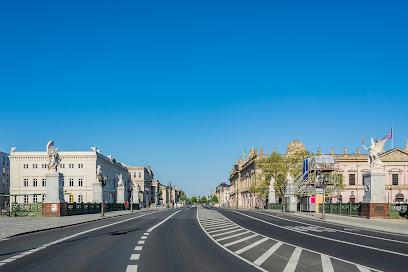
Bebelpl.
0.4 km
Explore Berlin's Bebelplatz: A historic square where architectural grandeur meets poignant remembrance, offering a powerful reflection on culture, freedom, and the lessons of history.

Embassy of Russia in Berlin
0.4 km
Explore the Embassy of Russia in Berlin, a stunning architectural landmark on Unter den Linden, reflecting rich history and cultural diplomacy.

Saint Hedwig's Cathedral
0.4 km
Explore the architectural beauty and historical significance of Saint Hedwig's Cathedral, a neoclassical masterpiece in the heart of Berlin.
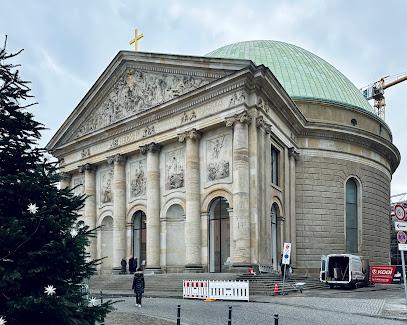
Denkmal für den Völkermord an den Armeniern
0.4 km
Explore the Armenian Genocide Memorial in Berlin – a poignant tribute to history, remembrance, and the enduring spirit of resilience.
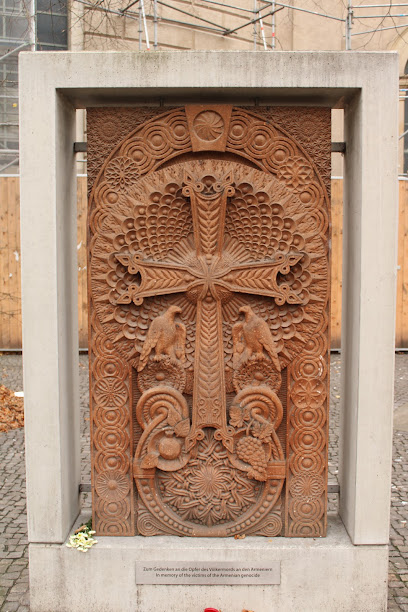
Verwaltung des Deutschen Bundestages
0.5 km
Discover the rich history and stunning architecture of the German Bundestag, a pivotal symbol of democracy in Berlin's vibrant Mitte district.
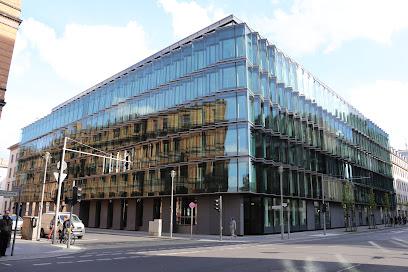
Schiffbauerdamm
0.5 km
Discover the cultural heart of Berlin at Schiffbauerdamm, where history meets vibrant entertainment and stunning waterfront views.
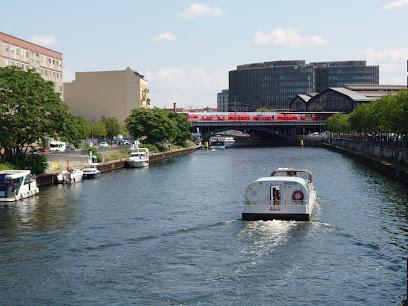
Mündung Südpanke
0.6 km
Discover the serene Mündung Südpanke in Berlin-Mitte, where the restored Südpanke River meets the Spree, offering a tranquil escape and a glimpse into the city's green heart.

Friedrichswerdersche Church
0.6 km
Discover Berlin's first Neo-Gothic church, a stunning architectural masterpiece by Karl Friedrich Schinkel, now showcasing 19th-century German sculptures in the heart of the city.
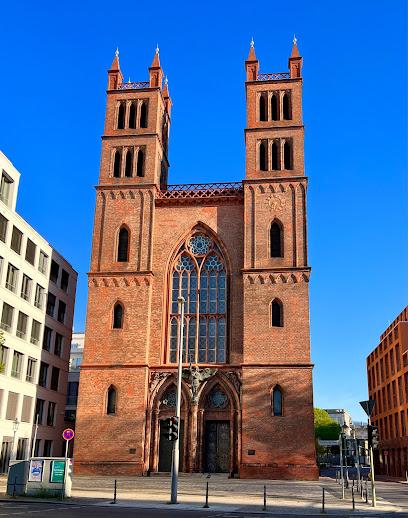
British Embassy Berlin
0.6 km
Explore the British Embassy in Berlin - a blend of modern architecture and rich diplomatic history in the heart of Germany.
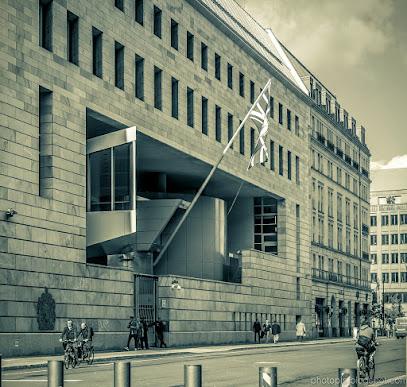
Hausvogteiplatz
0.7 km
Discover Hausvogteiplatz in Berlin-Mitte, a square steeped in history as the former heart of Berlin's garment industry, now a place of remembrance and urban renewal.
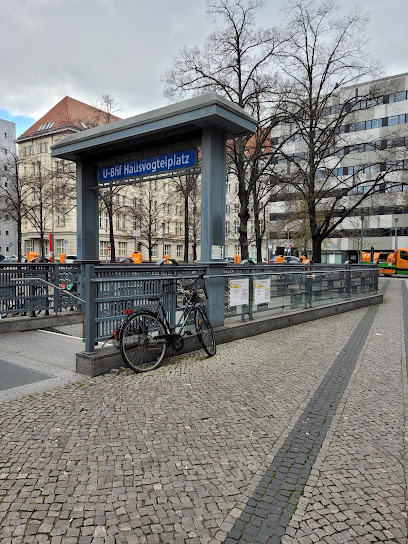
Schinkelpl.
0.7 km
Explore the beauty of Schinkelplatz in Berlin, where art, history, and nature converge in a picturesque urban setting.
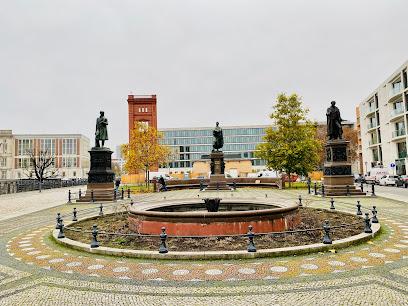
Marschall Bridge
0.7 km
Discover Berlin's Marschall Bridge: A breathtaking architectural gem connecting history and modernity across the Spree River.
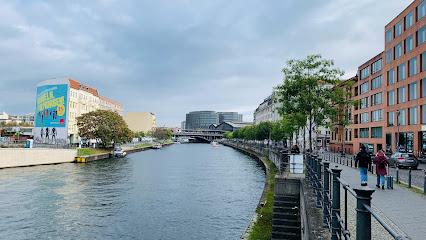
Johann Georg Elser Memorial
0.7 km
Explore the Johann Georg Elser Memorial in Berlin, a powerful tribute to resistance and courage against tyranny and oppression in history.
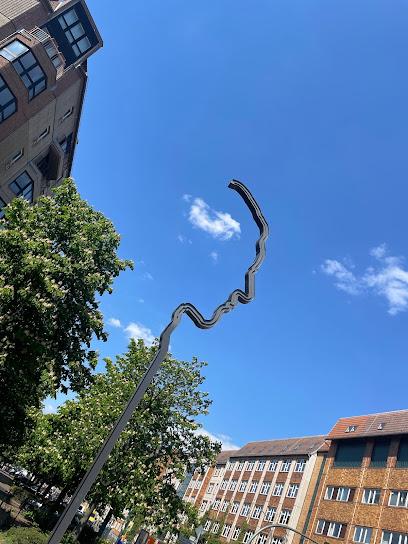
Hausvogteipl. & Mohrenstraße
0.7 km
Discover the dynamic intersection of Hausvogteiplatz & Mohrenstraße in Berlin, where history meets modernity in a vibrant urban setting.
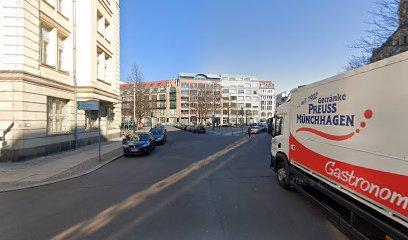
Unmissable attractions to see
Französisches Palais
0.2 km
Discover the architectural splendor and historical significance of the Französisches Palais, a must-visit landmark in the heart of Berlin.
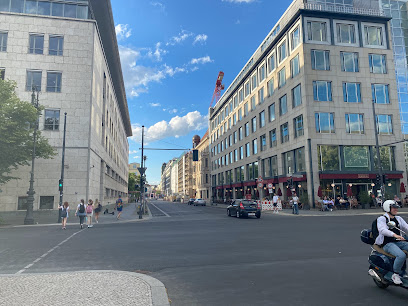
Equestrian statue of King Friedrich II. of Prussia
0.2 km
Discover the Equestrian Statue of King Friedrich II in Berlin, a stunning historical landmark that celebrates the legacy of Prussia's illustrious monarch.
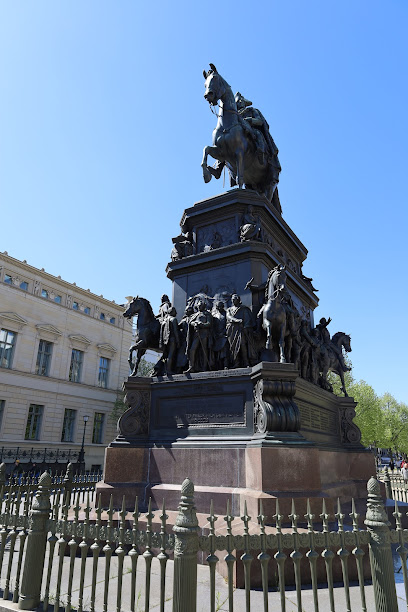
Altes Palais (Berlin)
0.2 km
Explore Altes Palais in Berlin, a stunning historical landmark showcasing the city’s rich architectural heritage and vibrant history.
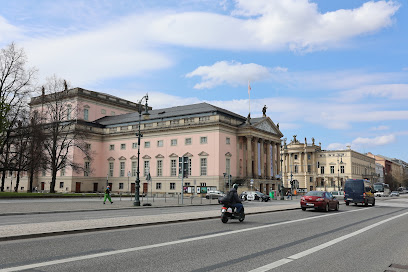
Luxuskaufhaus
0.3 km
Discover unparalleled luxury at Luxuskaufhaus, Berlin's premier shopping destination featuring high-end brands and exquisite designer collections.
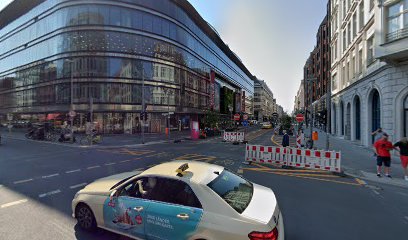
The Original Berlin Walks
0.3 km
Experience Berlin like never before with The Original Berlin Walks, where history meets vibrant culture through engaging guided tours.
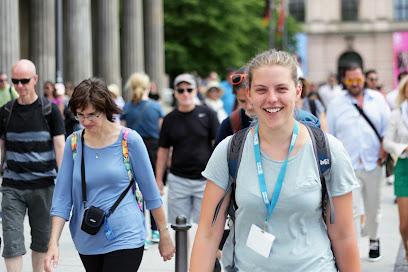
Statue of Wilhelm von Humboldt
0.3 km
Explore the Statue of Wilhelm von Humboldt in Berlin, a stunning tribute to the influential thinker, set in the vibrant heart of the city.
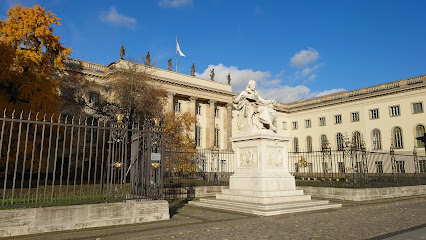
Antiquariat & Kunsthandel Gaston Düssel
0.3 km
Explore the captivating world of antiques and art at Antiquariat & Kunsthandel Gaston Düssel in Berlin, a treasure trove for collectors and history enthusiasts.
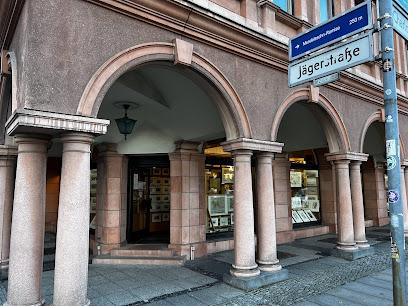
Humboldt University of Berlin
0.3 km
Explore Humboldt University of Berlin, a symbol of academic excellence and a cultural landmark in the heart of the city, rich in history and stunning architecture.
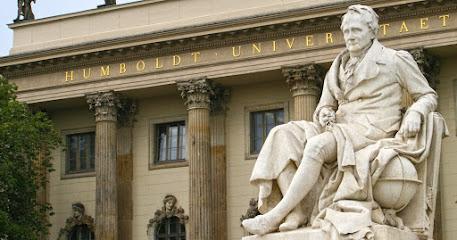
Memorial to May 10, 1933 Nazi Book Burning
0.3 km
Visit the Memorial to May 10, 1933 Nazi Book Burning in Berlin: a poignant reminder of the fight for freedom and the dangers of censorship.
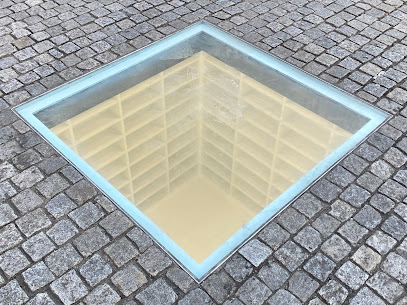
Bebelplatz
0.3 km
Discover the historical significance and stunning architecture of Bebelplatz, a must-visit plaza in the heart of Berlin's Mitte district.
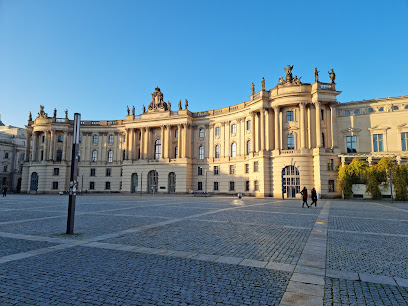
Trains to Life – Trains to Death
0.3 km
Explore the poignant 'Trains to Life – Trains to Death' memorial in Berlin, a tribute to the Kindertransport and the resilience of Jewish children escaping persecution.
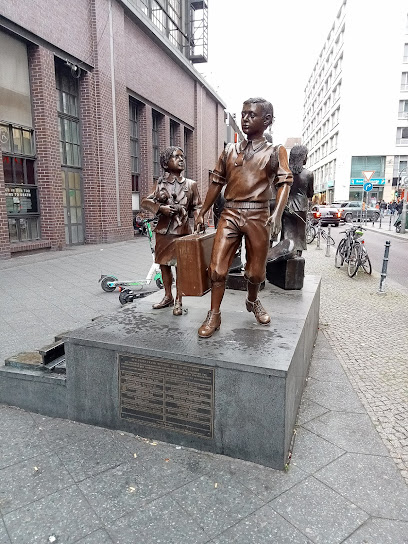
Französische Friedrichstadtkirche
0.3 km
Discover the French Friedrichstadtkirche, a stunning neoclassical church in Berlin's Gendarmenmarkt, rich in history and architectural beauty.
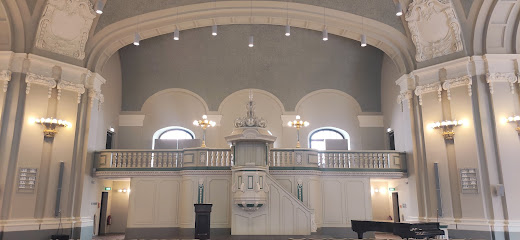
Französischer Dom
0.4 km
Explore the stunning Französischer Dom in Berlin, a historical landmark that showcases beautiful architecture and rich cultural heritage.
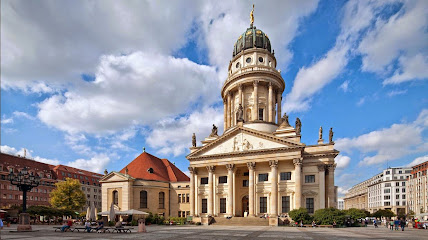
Hugenottenmuseum Berlin
0.4 km
Explore the Hugenottenmuseum in Berlin to uncover the rich history and heritage of the Huguenots, a pivotal cultural group in Germany's past.
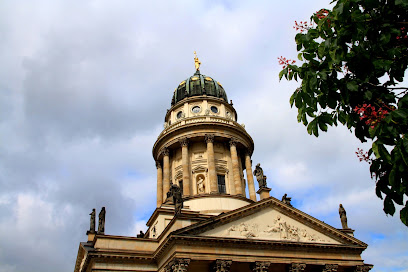
Berlin State Opera
0.4 km
Experience the grandeur of the Berlin State Opera, a historic venue showcasing world-class performances in the heart of Germany's vibrant capital.
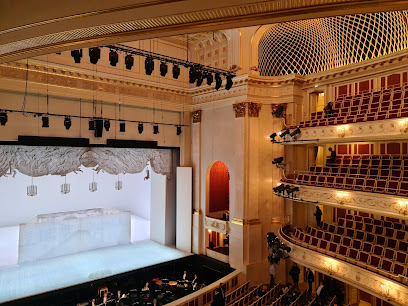
Essential places to dine
Nante-Eck
0.1 km
Experience authentic German cuisine at Nante-Eck in Berlin’s Mitte district—where tradition meets taste in a cozy atmosphere.
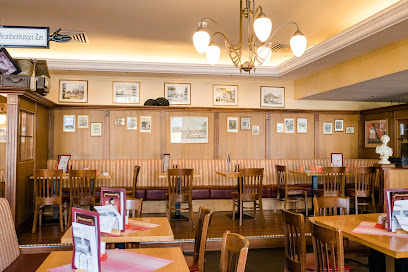
Bocca di Bacco
0.2 km
Experience authentic Italian cuisine at Bocca di Bacco in Berlin – where tradition meets elegance in every dish.
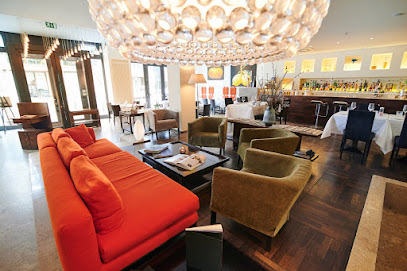
Charlotte & Fritz
0.2 km
Experience the pinnacle of fine dining at Charlotte & Fritz, where exquisite flavors meet elegant ambiance in Berlin's Mitte district.
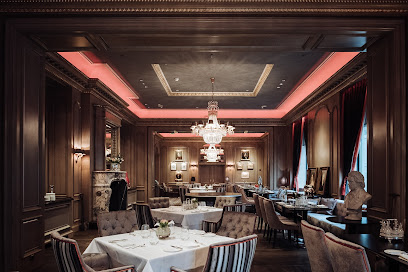
Berliner Republik
0.5 km
Discover Berliner Republik: A Culinary Haven in Berlin's Mitte District Offering Authentic German Cuisine and Lively Atmosphere.
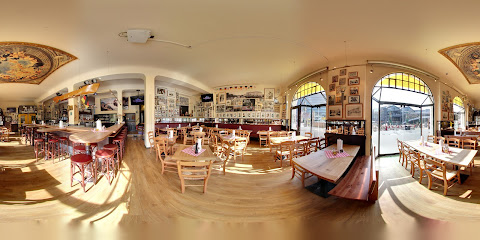
Restaurant Maximilians Berlin
0.6 km
Experience authentic Bavarian cuisine at Restaurant Maximilians in Berlin's Mitte district—where every meal is a celebration of flavor.
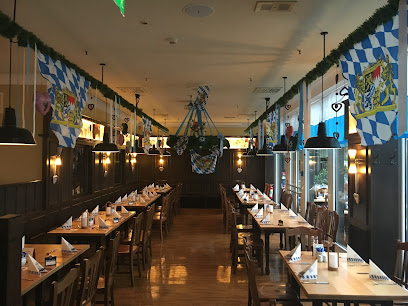
Restaurant FOREIGN AFFAIRS
0.6 km
Discover authentic Austrian cuisine in Berlin's Mitte district at Restaurant FOREIGN AFFAIRS – where tradition meets taste.
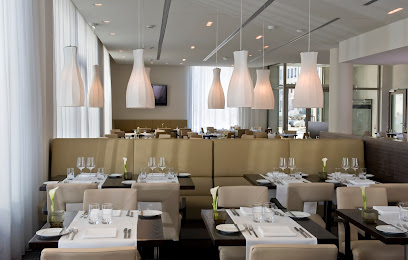
Lorenz Adlon Esszimmer
0.6 km
Experience unparalleled fine dining at Lorenz Adlon Esszimmer in Berlin – where modern European cuisine meets historic elegance.

Grill Royal
0.6 km
Experience exceptional steaks and vibrant ambiance at Grill Royal in Berlin’s Mitte district.
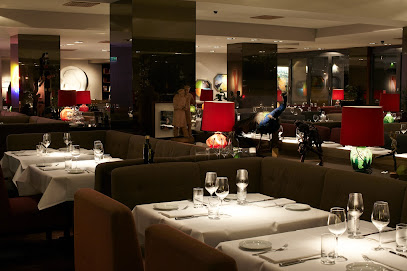
Boulevard Friedrichstrasse
0.7 km
Experience authentic German cuisine at Boulevard Friedrichstrasse, where tradition meets taste in the heart of Berlin.
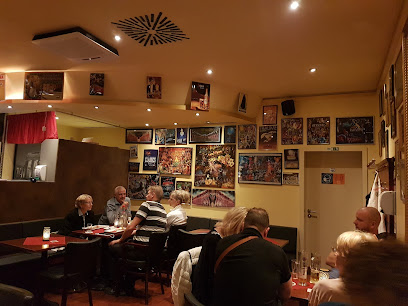
BLESS Restaurant
0.7 km
Experience the vibrant fusion of Vietnamese and Asian cuisine at BLESS Restaurant in Berlin's Mitte district.
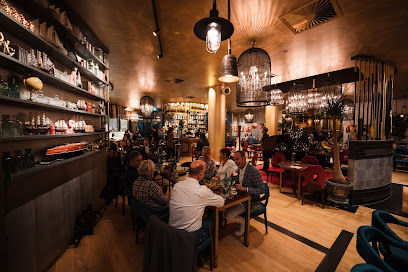
Restaurant Dae Mon
0.9 km
Discover an exquisite fusion of modern European cuisine at Restaurant Dae Mon in Berlin's vibrant Mitte district.
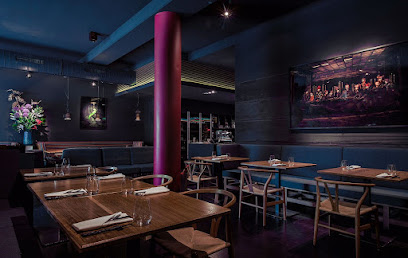
acht&dreissig
1.0 km
Savor traditional German dishes at acht&dreissig in Berlin, where authentic flavors meet inviting ambiance.
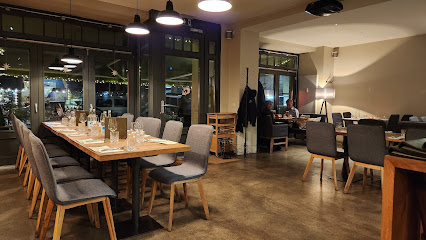
Johnny's Bar - Karibisches Restaurant
1.0 km
Experience authentic Caribbean flavors at Johnny's Bar in Berlin - where every dish tells a story and every sip transports you to paradise.
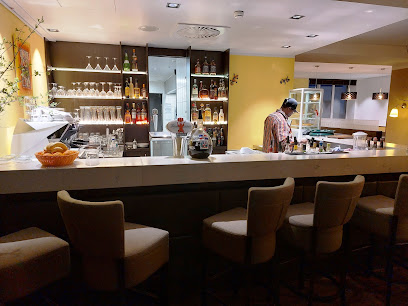
Alt-Berliner Gasthaus Julchen Hoppe
1.1 km
Savor traditional German dishes in the charming ambiance of Alt-Berliner Gasthaus Julchen Hoppe's historic setting.
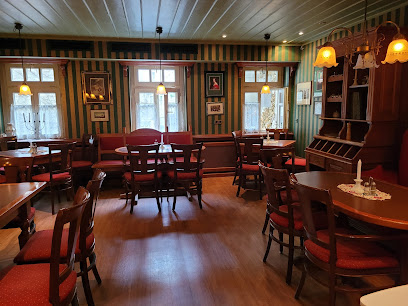
Pantry
1.1 km
Discover an eclectic dining experience at Pantry in Berlin - where fusion cuisine meets elegance in the heart of Mitte.
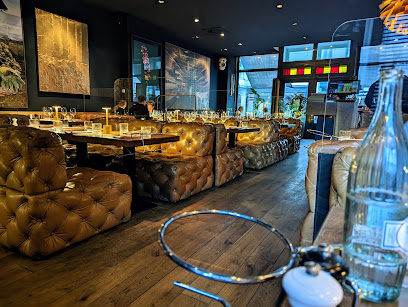
Markets, malls and hidden boutiques
BERLIN STORE
0.2 km
Discover unique souvenirs and local crafts at the Berlin Store, the perfect stop for tourists seeking a piece of the city's vibrant culture.
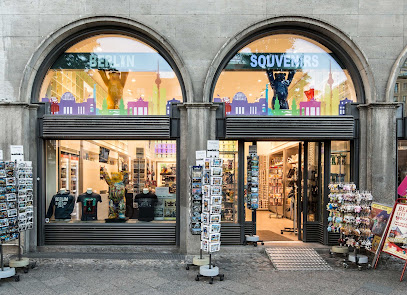
Galeries Lafayette
0.3 km
Discover the allure of luxury shopping and gourmet dining at Galeries Lafayette in the heart of Berlin, a must-visit for every traveler.
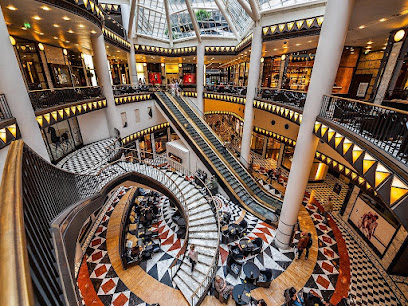
The Square Berlin East
0.3 km
Explore a unique blend of fashion, literature, and home decor at The Square Berlin East, a boutique gem in the heart of Berlin's Mitte district.

Wolford Boutique Berlin
0.4 km
Experience luxury and elegance at Wolford Boutique Berlin, your go-to destination for exquisite women's fashion and lingerie.
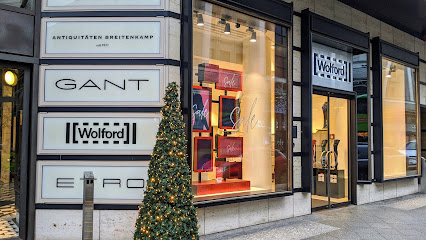
Shop Passage im Humboldt Forum
0.9 km
Explore a captivating selection of gifts and unique souvenirs at Shop Passage im Humboldt Forum, a must-visit destination in Berlin.
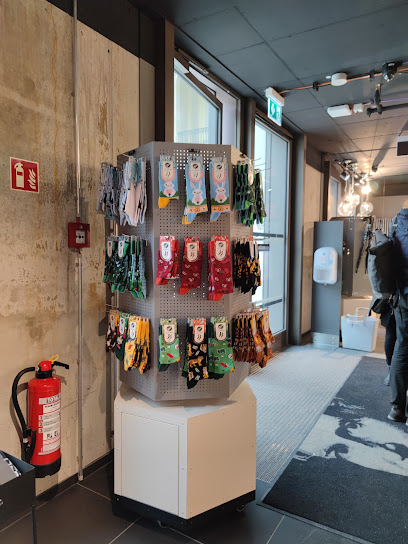
Mall of Berlin
0.9 km
Explore the Mall of Berlin: A shopping haven in the heart of the city with endless retail, dining, and entertainment options.
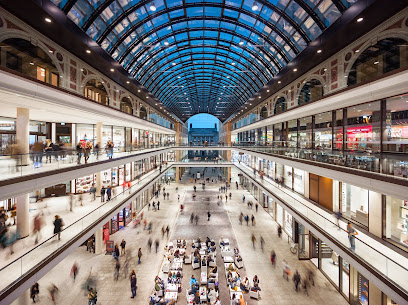
I love Berlin
1.0 km
Explore 'I Love Berlin' for unique souvenirs and gifts that embody the vibrant culture and spirit of Berlin, located in the heart of the city.

Redbear Berlin
1.0 km
Explore Redbear Berlin, a stylish boutique offering unique fashion pieces in the vibrant Mitte district, perfect for discerning shoppers.

Vielfach Berlin -Das Kreativkaufhaus-
1.1 km
Explore Vielfach Berlin, a unique gift shop and art gallery offering handcrafted souvenirs and local art that capture Berlin's vibrant creative spirit.
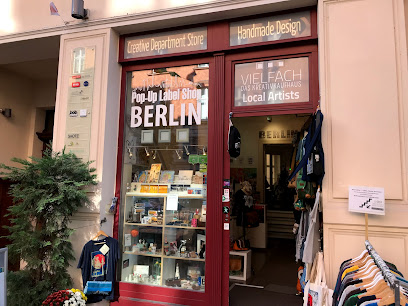
Berlin Loves You
1.1 km
Explore unique souvenirs and local treasures at 'Berlin Loves You', the quintessential store for capturing the spirit of Berlin.
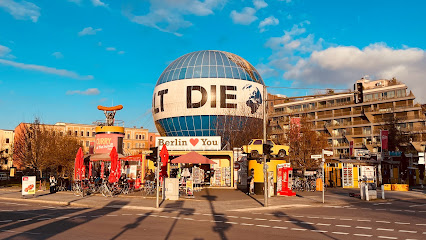
AMPELMANN shop in the Hackescher Markt
1.2 km
Explore the charming AMPELMANN shop in Hackescher Markt for unique Berlin souvenirs that capture the city's spirit and culture.
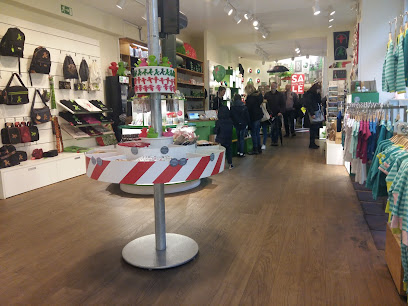
Hackesche Höfe
1.2 km
Explore Hackesche Höfe, a vibrant shopping and cultural hub in Berlin, featuring unique shops, diverse dining options, and artistic experiences.
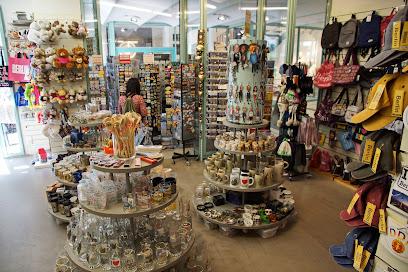
ausberlin
1.3 km
Discover local fashion and unique gifts at ausberlin, a vibrant department store in the heart of Berlin's Mitte district.
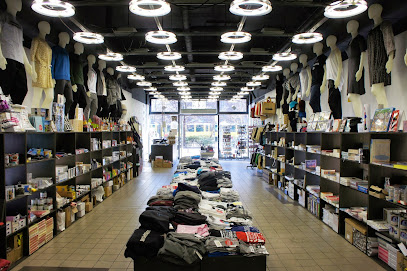
Kauf Dich Glücklich Mode
1.5 km
Discover unique fashion at Kauf Dich Glücklich Mode, a stylish clothing store in Berlin's Mitte district, where creativity meets contemporary style.

The Playce
1.5 km
Experience shopping bliss at The Playce in Berlin, where high-quality stores meet delightful dining and vibrant entertainment.
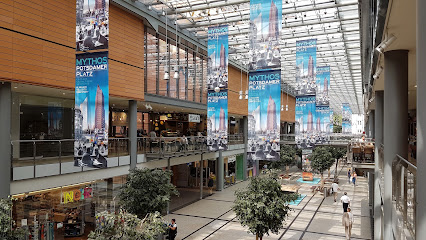
Essential bars & hidden hideouts
Windhorst
0.3 km
Experience Berlin's vibrant nightlife at Windhorst, an upscale cocktail bar serving exquisite drinks in a stylish atmosphere in the heart of Mitte.
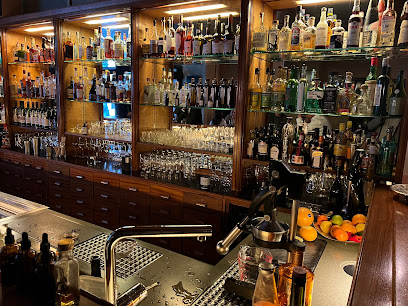
Newton Bar
0.5 km
Experience the vibrant nightlife of Berlin at Newton Bar, where stylish cocktails and a chic atmosphere await in Mitte.
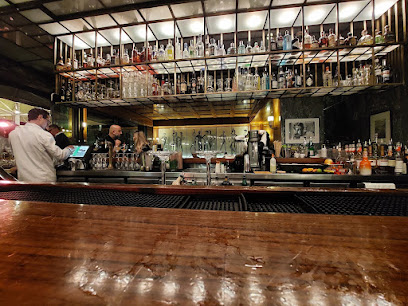
meisterschueler
0.6 km
Discover Meisterschueler in Berlin – a captivating cocktail bar that intertwines art and mixology for an unforgettable experience.
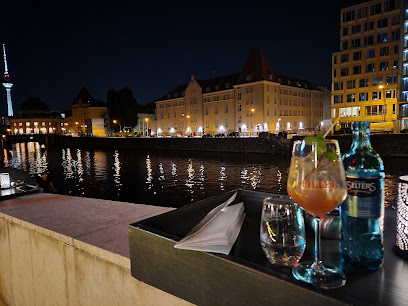
Charlie's Beach
1.0 km
Discover the perfect blend of relaxation and excitement at Charlie's Beach, a vibrant bar in Berlin's Mitte district with delightful drinks and a lively atmosphere.
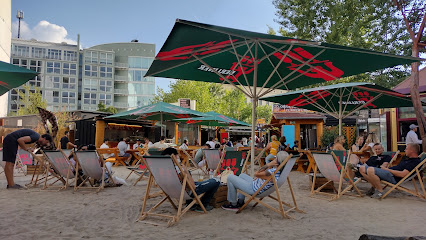
X-Terrain
1.0 km
Discover the eclectic vibe of X-Terrain, a unique bar in Berlin's Mitte with creative cocktails and a lively atmosphere perfect for nightlife enthusiasts.
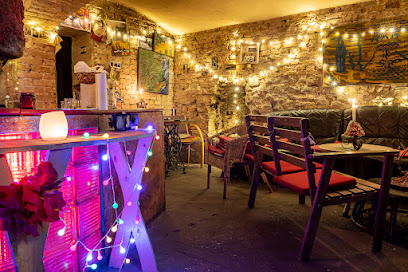
TheCoven Bar
1.0 km
Discover the allure of TheCoven Bar, a cocktail haven in the heart of Berlin's Mitte district, where innovative drinks meet enchanting ambiance.
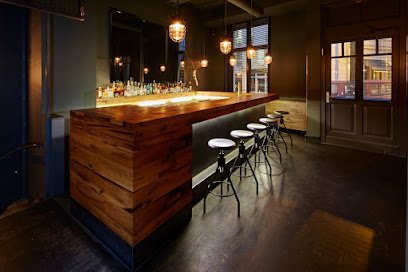
Bar Amélie
1.0 km
Discover Berlin's vibrant cocktail scene at Bar Amélie, where expertly crafted drinks meet a cozy atmosphere in the heart of the city.
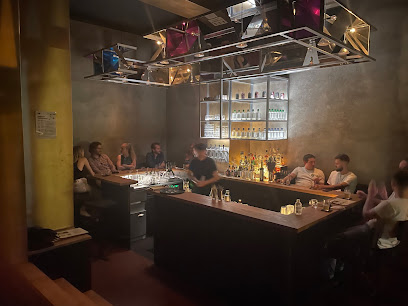
Berlin Icebar
1.1 km
Discover the magic of Berlin Icebar, where cocktails meet ice sculptures for a unique nightlife experience in the heart of the city.
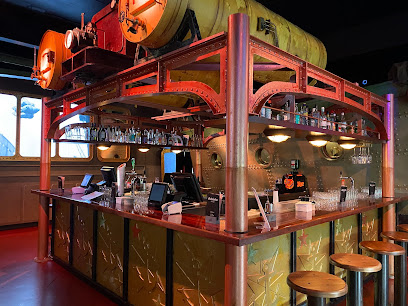
Melody Nelson bar
1.2 km
Discover the vibrant atmosphere of Melody Nelson, Berlin's chic bistro and cocktail bar, perfect for unwinding and socializing.
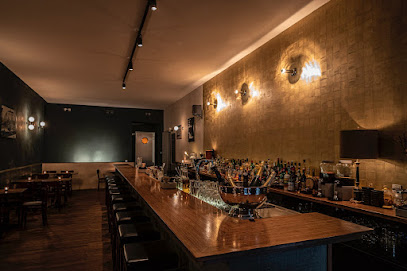
The Curtain Club
1.2 km
Experience elegance at The Curtain Club, Berlin's premier bar with exquisite cocktails and a chic atmosphere in the heart of Potsdamer Platz.
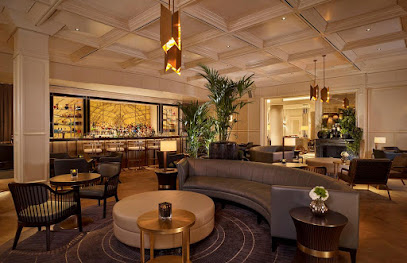
My Bar ICI
1.3 km
Discover the vibrant atmosphere and exquisite drink selection at My Bar ICI, a must-visit bar in the heart of Berlin's Mitte district.
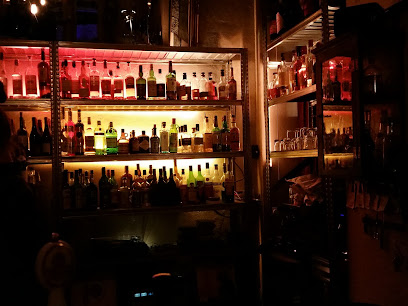
Reingold
1.3 km
Experience the vibrant nightlife of Berlin at Reingold, a cocktail bar in Mitte known for its expertly crafted drinks and lively atmosphere.
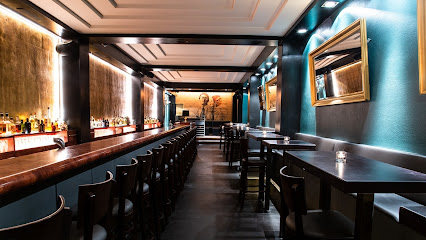
Knutschfleck Berlin
1.4 km
Discover the energy of Knutschfleck Berlin, where live music, delicious food, and dance come together for an unforgettable night out in the heart of the city.

Posh Bar
1.4 km
Discover the elegance of Posh Bar in Berlin, where expertly crafted cocktails meet a chic atmosphere in the heart of the city's nightlife.
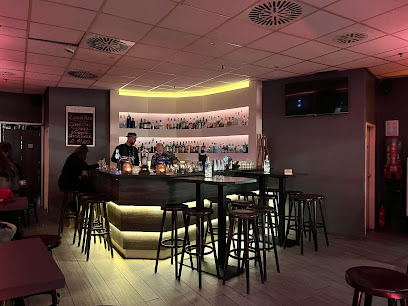
BonBon Bar Berlin
1.6 km
Discover the lively ambiance and eclectic cocktails at BonBon Bar, a must-visit for an unforgettable night out in Berlin's vibrant Mitte district.




